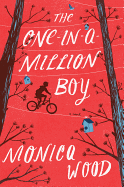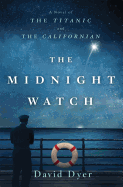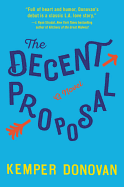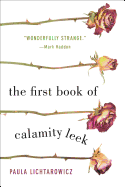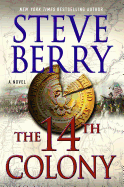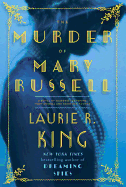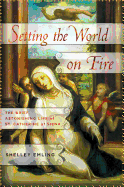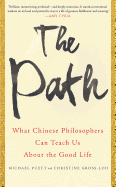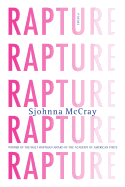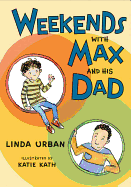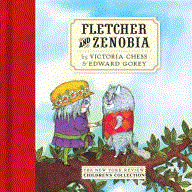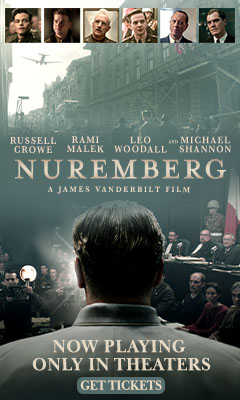Friday, April 15, 2016
The first time I felt awe in the presence of birds was in Costa Rica, where scarlet macaws fly over the forest canopy in raucous rhythm. We also spotted a rare quetzal--a crimson and iridescent-emerald surprise. I felt a different sort of awe after reading Charles Siebert's New York Times article about parrots and PTSD. It's illustrated with photos of beautiful rescued birds; the most compelling one was Bobbi, a Goffin's cockatoo, who was kept in a kitchen drawer by her former owner. She's missing most of her feathers, but is still lovely in her disarray, and her remaining feathers are exquisite.
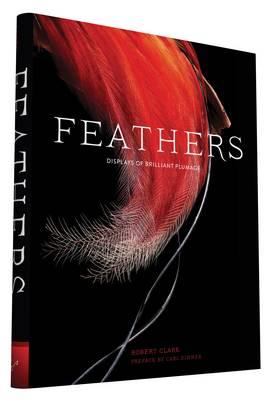 Feathers are considered the most complex body-protection structures found in vertebrates, and are among the most breathtaking. National Geographic photographer Robert Clark shows off their stunning beauty and complexity in Feathers: Displays of Brilliant Plumage (Chronicle, $29.95). The close-up of the mating-season wing feather of the Great Argus (Malaysia), shows leopard-like spots (ocelli) above and below a deep blue shaft, with a band of yellow and black above small white spots on an orange background. The King Bird-of-Paradise (Papua New Guinea) sports a pair of "tail wires" that swirl into a green lollipop. Male Birds-of-Paradise perform elaborate and dazzling dances to attract mates, abetted by almost-profligate plumage.
Feathers are considered the most complex body-protection structures found in vertebrates, and are among the most breathtaking. National Geographic photographer Robert Clark shows off their stunning beauty and complexity in Feathers: Displays of Brilliant Plumage (Chronicle, $29.95). The close-up of the mating-season wing feather of the Great Argus (Malaysia), shows leopard-like spots (ocelli) above and below a deep blue shaft, with a band of yellow and black above small white spots on an orange background. The King Bird-of-Paradise (Papua New Guinea) sports a pair of "tail wires" that swirl into a green lollipop. Male Birds-of-Paradise perform elaborate and dazzling dances to attract mates, abetted by almost-profligate plumage.
.jpg) The wing spread of the Lesser Snow Goose (North America)--white feathers overlaying black--is classically graceful, icily elegant. The plumage of the Superb Starling of Eastern Africa is a fan of velvety, shimmery blue-green. Ostrich feathers are useless except for balance when running; in Clark's image, they look like an Afghan's airy coat, while the chick's feathers are thistledown. The Palm Cockatoo (New Guinea) is a mysterious dusky, smoky gray with a bit of red on its cheek. The Gray Junglefowl (India) resembles a common chicken except for the gold and black paper-thin crest that resembles a spray of overlapping paintbrushes.
The wing spread of the Lesser Snow Goose (North America)--white feathers overlaying black--is classically graceful, icily elegant. The plumage of the Superb Starling of Eastern Africa is a fan of velvety, shimmery blue-green. Ostrich feathers are useless except for balance when running; in Clark's image, they look like an Afghan's airy coat, while the chick's feathers are thistledown. The Palm Cockatoo (New Guinea) is a mysterious dusky, smoky gray with a bit of red on its cheek. The Gray Junglefowl (India) resembles a common chicken except for the gold and black paper-thin crest that resembles a spray of overlapping paintbrushes.
Feathers is spectacular.
The Last Painting of Sara de Vos
by Dominic Smith
The Last Painting of Sara de Vos by Australian novelist Dominic Smith (Bright & Distant Shores) is a mesmerizing and magically faux historical novel.
The narrative dips gracefully between centuries to tell the interwoven stories of its three characters. Gifted artist Sara de Vos, in 1631, is the first woman admitted to the Guild of St. Luke as a master painter, but she's also a working woman struggling with debt. Ellie Shipley, a lonely Ph.D. student in Brooklyn in 1957, consults for collectors and takes on restoration work to make ends meet when an art dealer persuades her to copy a rare de Vos called At the Edge of the Woods. Marty de Groot is a wealthy New York lawyer and descendant of the original owner; he is hosting a party when the painting is stolen and replaced with a fake so convincing it takes him six months to see the substitution and embark on his own deceptions to exact revenge.
Fifty years later, Ellie is a prominent curator in Sydney preparing an exhibition on female Dutch Golden Age painters when she learns that both versions of At the Edge of the Woods are on their way--the original from a Dutch private collector and her own forgery, personally delivered by Marty de Groot. Helpless with foreboding and regret, she's convinced her secret is about to be revealed.
The Last Painting of Sara de Vos is a splendid thing: a riveting mystery set in the rarefied world of art collection about a stolen masterpiece and a gorgeous, haunting novel rooted in history, an incandescent achievement of literary imagination. --Jeanette Zwart, freelance writer and reviewer
Discover: A landscape painting becomes the focus of the longings and losses, deceptions and loves of its current owner, its forger and its Dutch Golden Age creator.
The One-In-a-Million Boy
by Monica Wood
In The One-in-a-Million Boy, her first novel in more than a decade, Monica Wood (When We Were the Kennedys) introduces readers to a cast of unexpected heroes and the remarkable child whose death brings them together.
At 104 years of age, Ona Vitkus found a once-in-a-lifetime friend in the 11-year-old Boy Scout assigned to refill her bird feeders. He hoarded objects in groups of 10, obsessed over world records, and laughed in a peculiar yip. He also showed Ona an interest and devotion she had never known before. At the story's opening, Ona has grown to look forward to the boy's visits, but this time, his father, Quinn, arrives in the boy's place.
Although certainly no rock star, Quinn Porter has made a living playing his guitar at any gig he can find, both chasing his dreams and avoiding Belle, his ex-wife two times over, and their boy, whose eccentricities left Quinn utterly baffled. Now the boy--he remains unnamed throughout--has died unexpectedly, and Quinn's detached treatment of his family becomes a source of stabbing guilt.
Wood dishes out tragedy and charm in equal measure with an intergenerational friendship that retains its beauty despite death. Although rarely seen directly, the titular boy hovers at the edges of every scene, binding Quinn and Belle whether they like it or not, drawing Ona's secrets from her lips. Wood interweaves the lives of her broken heroes until they cannot disentangle from one another. Although most readers will find tissues often necessary while navigating the layers of this story, the conclusion will leave them smiling through their tears. --Jaclyn Fulwood, blogger at Infinite Reads
Discover: The sudden death of an unusual child brings together his grief-stricken mother, absentee father and the centenarian woman he befriended, with heartwarming results.
The Midnight Watch: A Novel of the Titanic and the Californian
by David Dyer
David Dyer's experience as an Australian ship's officer, along with his extensive research into the SS Californian while a maritime lawyer, help to make his first novel, The Midnight Watch, a captivating trip back in time.
On the night of April 14, 1912, Second Officer Herbert Stone stood middle--or midnight--watch on the SS Californian, stopped for the night because of ice conditions in the Atlantic. He observed rockets shot from a nearby ship, and called down to his captain, Stanley Lord. Lord indicated that they could just be company signals; Stone should continue watching. After calling back a second time and sending an apprentice down to update Lord, Stone recorded in the ship's log that the rockets ceased and the lights from the steamer disappeared. What the officer had thought was a steamer that had sailed off was actually the passenger liner RMS Titanic in distress, and it had sunk.
In The Midnight Watch Dyer creates an account of what might have happened on both ships during that fateful night, as told from the perspective of fictional journalist John Steadman. Dyer's compassionate insight into Stone's psyche, with parallel references to Moby-Dick's Starbuck, creates a character almost as empathetic as a family of third-class passengers aboard the Titanic. And the cunningly developed setting is chilling enough to elicit shivers.
With Dyer's skillful writing and nautical understanding, the Titanic's famously tragic story resurfaces a century later, bringing a lesser-known aspect to light in this accomplished novel. --Jen Forbus of Jen's Book Thoughts
Discover: A former navy member focuses on the actions of an officer and the captain of a nearby ship whose decisions may have cost the lives of more than 1,500 souls who perished on the Titanic.
The Decent Proposal
by Kemper Donovan
Richard Baumbach is a good-looking, down-on-his-luck film producer. Richard's best friend is Michaela (aka "Mike"), a hardworking literary manager. In college, they were a couple, but Mike ended their romance. Once Mike gets wind of Richard's moneymaking opportunity--the DP, as the "decent proposal" is called--the scenario suddenly frames Richard in a new light. Is Mike actually in love with Richard after all?
Elizabeth Santiago is the other half of the DP and the antithesis of Richard: she doesn't watch TV; she's not even on Facebook. On the fast track to partnership at her high-powered law firm, Elizabeth doesn't need the money. A loner who lives to work, she has forsaken her family and their devout Catholic faith. The DP offers Elizabeth a perfect opportunity to step outside her comfort zone.
A strong, omniscient narrator anchors Donovan's deconstructed, opposites-attract love story where emotional stakes deepen as the story unfolds. References to pop culture, classic literature and movies--along with snappy dialogue and well-drawn characterizations, especially in the cast of supporting players--infuse a clever plot filled with surprising twists that will keep readers entertained and in suspense. --Kathleen Gerard, blogger at Reading Between the Lines
Discover: Two strangers are brought together by a mysterious benefactor who offers them a chance--with conditions--to split a million dollars.
The First Book of Calamity Leek
by Paula Lichtarowicz
The First Book of Calamity Leek is disorienting at the start, as Calamity Leek records her memories of "the night Truly did it," with references to "the Pontefracts," the "High Hut," the "Garden" and "our Wall of Safekeeping" coming fast and furious in the first few pages alone. And Calamity, our strange and unknowable narrator, provides no explanation for them. She assumes that the world of the Garden--where she and her 15 sisters live with Aunty and the Mother, in fear of the Sun--is a world known to and understood by everyone. Anything that is not understood, after all, can simply be looked up in the Appendix--a binder full of definitions provided by Aunty to explain everything, including the Creation, Demonmales, the Outside, Unsavory Urges--or one of several volumes of Reader's Digest.
Though Calamity's narrative offers little to no explanation of the strange and complex world she inhabits, Paula Lichtarowicz has created a character whose strong and compelling voice will leave readers no choice but to forge ahead in their confusion. That confusion will be short-lived, though, as carefully paced and layered revelations bring Calamity's reality into ever-sharper focus. In the process, The First Book of Calamity Leek evolves from a strange fictional memoir to a disturbing story of creation myths and walled-up lives and of what happens when someone questions everything she's been taught as gospel. But Lichtarowicz peppers her debut novel with references to show tunes and movie stars and beauty treatments, keeping her seemingly fantastical novel firmly anchored in a familiar world. --Kerry McHugh, blogger at Entomology of a Bookworm
Discover: The fictional memoir of Calamity Leek and her life in the Garden is as captivating as it is strange and disturbing.
Mystery & Thriller
The 14th Colony
by Steve Berry
Former intelligence agent Cotton Malone is called away from his bookshop in Copenhagen to do a contract job for his ex-boss Stephanie Nelle in Steve Berry's 11th thriller in the series. Malone is shot down flying reconnaissance over Lake Baikal, Russia, and Nelle needs help getting him out, so she calls the agent's former love interest, Cassiopeia Vitt, in France.
In Russia, Malone comes face-to-face with Aleksandr Zorin, the ex-KGB agent he was sent to scout, and learns that Zorin is planning to strike the United States--as retribution for the Soviet Union's downfall. Zorin intends to uncover old nuclear suitcase bombs hidden in the U.S. by the Soviets during the Cold War. He plans to detonate them during the upcoming presidential inauguration and kill the newly elected president and vice president, a scenario that would wreak political havoc due to deep legal flaws in the Presidential Succession Act.
Zorin sets off on his mission believing that his people killed Malone. But with the help of an old Soviet archivist and Vitt, Malone escapes. He has to find Zorin and the bombs before the ex-spy can blow the U.S. into unprecedented political turmoil.
The reality of Berry's inauguration scenario heightens the intensity and suspense of The 14th Colony, while offering the reader fascinating, little-known tidbits about U.S. history and politics. Rapid, plot-driven action keeps the momentum of this adventure at a pulse-thumping speed. Long-time Malone fans and new readers alike should find much to satisfy their thriller cravings. --Jen Forbus of Jen's Book Thoughts
Discover: Cotton Malone must stop an ex-KGB agent who plans to unleash his pent-up hatred for the U.S. at the presidential inauguration.
The Murder of Mary Russell
by Laurie R. King
After several years in the company of Sherlock Holmes, Mary Russell has developed a deep affection for Holmes's faithful housekeeper, Mrs. Hudson, who sees to their every need. Mary has never inquired into Mrs. Hudson's past, knowing only that she has relatives in Australia. But when a young, brash and armed Australian appears one afternoon, Mary finds herself caught off guard and suddenly curious. When Holmes returns home to find Russell gone, the great detective must reach into the past to unravel the young man's connection to Mrs. Hudson--and to find out where he has taken Mary.
Laurie R. King (Dreaming Spies, The Bones of Paris) continues her series featuring Holmes and Russell, interspersing Mary's first-person narration with extended flashbacks from Mrs. Hudson's earlier life. Raised by a ne'er-do-well father, Clarissa Hudson learned the tricks of the confidence game early on. Though her father favored his younger daughter, Alicia, it was Clarissa whom he tapped to be his partner in their "Cheats" and, some years later, turned to again when his luck ran out. An unexpected encounter with "the grey-eyed enigma of London" would bind Clarissa to Sherlock Holmes for life, and King expertly weaves together the threads of the housekeeper's past, Holmes's detective career and the echoes of that fateful night.
Whip-smart, suspenseful and intricately plotted, The Murder of Mary Russell shines a brilliant light on an often overlooked aspect of the Sherlock Holmes universe. --Katie Noah Gibson, blogger at Cakes, Tea and Dreams
Discover: Sherlock Holmes and Mary Russell delve into the origin story of the faithful Mrs. Hudson.
Biography & Memoir
Setting the World on Fire: The Brief, Astonishing Life of St. Catherine of Siena
by Shelley Emling
The unrest of 14th-century Italy comes alive in Shelley Emling's biography of St. Catherine of Siena, Setting the World on Fire. Political imbroglios in the Catholic Church, brutal crusades in Palestine and the gruesome specter of the Black Death haunt Catherine's short life in Tuscany. From the time she was very young, she radiated a powerful mystic spirituality. She experienced rapturous visions of Jesus Christ, even becoming his wife in one, and staunchly resisted pressure from her family to marry anyone else. Mortifying herself through hunger, a painfully thin Catherine committed herself to working with the sick and dying while also vociferously charging the Papacy to quit its corrupted ways--a dangerous mission for anyone, especially a woman, at the time. As her influence spread and her body weakened, her spirit only grew stronger, and she eventually bore the miraculous marks of her devotion to Christ: stigmata.
Emling (Marie Curie and her Daughters) makes clear and concise work of relaying the significance of Catherine's ministry, without straying into hagiography. The author navigates the saint's ceaseless fasting with a fascinating passage about what one scholar calls "holy anorexics," and Emling never sugarcoats Catherine's troubling support of Christendom's war on Muslims. Setting the World on Fire is a slim but nevertheless intriguing study of a complex, charismatic woman. It is not for the squeamish reader; Catherine is reported to have "longed to quench her thirst with blood." In a time of myriad uncertainties, she saw the physical and the spiritual as indelibly entwined. --Dave Wheeler, associate editor, Shelf Awareness
Discover: Shelley Emling's biography of St. Catherine of Siena depicts a fascinating and complex woman.
Philosophy
The Path: What Chinese Philosophers Can Teach Us About the Good Life
by Michael Puett and Christine Gross-Loh
Most philosophy courses begin with big, abstract questions: What is morality? What is the meaning of life? These questions, explains Harvard professor Michael Puett, run opposite to the ideas of Confucius, who was most interested in the simple concerns of everyday life--how to be happy or how to treat other people. Incidentally, these are also the questions Puett frequently hears from his students at Harvard, where he has taught Chinese philosophy for more than two decades. Now Puett, along with journalist Christine Gross-Loh, has boiled down the ideas of his courses in The Path: What Chinese Philosophers Can Teach Us About the Good Life.
Gross-Loh, who holds a Ph.D. in East Asian history from Harvard, first became interested in Puett while writing an article for the Atlantic that sought to explain why a course on 2,000-year-old thinkers had become one of the most popular on campus. Perhaps one reason for this is Puett's ability to understand his audience. In The Path, he addresses the Western reader directly, explaining that many Western ideas taken for granted are the legacy of Protestant values--for instance, the idea that a person has a "true, authentic self" whose purpose he should aspire to fulfill. This notion is in fact incompatible with Confucian thought, which does not see individuals as "fixed" but rather as constantly changing beings with the ability to adapt at any given moment. While The Path is a quick read, the ideas it suggests will likely stick with readers for a long time. --Annie Atherton
Discover: The key ideas of ancient Chinese philosophy are distilled in this accessible guide on how to live a happy, meaningful life.
Poetry
Rapture: Poems
by Sjohnna McCray
Poet Sjohnna McCray's life provides plenty of material for his debut collection, Rapture. The son of an African American Vietnam vet who died in his 40s and a Korean prostitute, McCray mines the complications of his family life and upbringing in Cincinnati. Overcoming the disadvantages of diabetes and his father's postwar employment as a janitor, McCray put himself through Ohio University, earned an MFA at the University of Virginia and an MA from Teachers College at Columbia University before winning the 2015 Walt Whitman Award. His poems explore the nuances of race, fatherhood, disease, sexuality and loneliness that his background inevitably threw his way.
In "How to Move," for example, he recalls that "Men on the corner used to holler/ that dad was a high yellow nigger/ or if the sun had darkened him/ and pulled the red to the surface of his skin,/ a red nigger." In the same poem, race becomes even more of an issue when his father loses his leg and has to choose from the prosthesis makers' color options: "perfect shades of negroness/ for limbless negroes, every negro/ matched to a swatch or chart with names/ like fingernail polish." Desire flairs in "Midlife Crisis in Boots" as the narrator is transfixed by a rodeo calf roper, but libido is tempered by commitment in the title poem: "Cast/ before one another, blemishes apparent/ ...we refuse to yield/ back into being singular." With each poem in this very personal collection, McCray digs deeply into his experience to craft an identity that embraces the complexity of his life without denying it. --Bruce Jacobs, founding partner, Watermark Books & Cafe, Wichita, Kan.
Discover: Sjohnna McCray's first poetry collection explores his quest to find individuality and connection from a complicated past.
Children's & Young Adult
Weekends with Max and His Dad
by Linda Urban, illus. by Katie Kath
In Weekends with Max and His Dad, an appealing series debut by Linda Urban (A Crooked Kind of Perfect; Hound Dog True), father and son navigate the unfamiliar waters of mom-less togetherness on three consecutive weekends. Amid the fun of playing spy, pizza and pancakes, Urban adeptly gets to the heart of things, mirroring the sensitive nine-year-old's emotions--from "low-down and blue" to giddy joy--with clarity, compassion and humor. Max's new double-household life entails a few hassles, including having to tag along for double the errands, and "Max would rather be in jail than go shopping. In jail you could sneak a spoon out of the cafeteria and dig a tunnel and escape. There was no escape from the grocery store." Still, father and son are so obviously fond of each other, the future bodes well for an ever-evolving relationship that's surely full of sleuthwork, singing and silliness.
Katie Kath's sketchy, pen-and-ink illustrations (also seen in Kelly Jones's Unusual Chickens for the Exceptional Poultry Farmer) add warmth to an already winning story. --Karin Snelson, children's & YA editor, Shelf Awareness
Discover: A father and son find their own way to navigate life together, post-divorce, in Linda Urban's engaging series debut for ages 6 to 9.
Golden Boys
by Sonya Hartnett
In Golden Boys, Australian author Sonya Hartnett, winner of a Printz Honor for Surrender, wriggles deep into the psyche of a few children. In this working-class suburb of yesteryear, the neighborhood kids travel in packs, and being a child is like being "dropped on a strangers' planet, forced to accept that these are the ways of this world." Childhood is "like being in rough but shallow water, buffeted, dunked, pushed this way and that." Growing up is "an unbuckling of faith."
Hartnett's mesmerizing story, told in shifting perspectives, begins with the "golden boys," 12-year-old Colt and his younger brother Bastian, sons of the movie-star-handsome, yet unsettlingly "try-hard" dentist Rex Jenson. He gives his boys all the state-of-the-art loot they could want "so he will be the father of envied sons." Most recently he's brought home a BMX bike, and, in a humiliating game, makes his boys guess what color it is before he'll hand it over. Bastian, who often has a "just-hatched-from-the-egg" expression, guesses nervously, gamely playing along. As Colt dryly notes, his trusting brother's "whole world is one of those plastic kitchens in which girls make tea from petals and water."
Although there is some action--rambling bike rides, scrapes with a bully, a father's drunken rampages and grisly moments aplenty--the brilliantly expressed private thoughts of Colt and neighbor-girl Freya are what really propel this literary novel. As the salty, credible Aussie banter keeps the brutal narrative buoyant, Golden Boys dazzlingly reflects the ferocity, rage, dread, shame, guilt and dark understanding with which children view the flawed adults around them. --Karin Snelson, children's & YA editor, Shelf Awareness
Discover: Australian author Sonya Hartnett delves deep into the nature of childhood in this masterful novel for teens and adults alike.
Fletcher and Zenobia
by Victoria Chess and Edward Gorey, illus. by Victoria Chess
"Once there was a cat named Fletcher who lived in the largest and tallest tree for miles around. He had run up it in a moment of thoughtless abandon, and ever since had been unable to get down again." So begins the small and square, nonsensical and endearing Fletcher and Zenobia by Victoria Chess and Edward Gorey, first published in 1967.
Up in the tree with Fletcher is a leather trunk containing a hat collection that the cat doesn't need. But one day, he finds a large papier-mâché egg in the trunk, and inside is Zenobia, an old-fashioned doll cast off by an unfeeling child named Mabel. Since there's no getting down from the tree, the cat and doll decide to have a party with lemon cake, peach ice cream and "what seemed like at least several hundred balloons, although really there were only twenty-seven." The extensive hat collection finally comes in handy. A guest making a "flumpety flumpety" sound shows up and reveals himself to be a moth. Lots of waltzing under the stars and eating of "frightfully rich" cake ensues, and the moth grows so large so fast that he is, in the end, able to fly them off the tree top: "And so Fletcher and Zenobia flew away to the great world--and who knew what special occasions?"
Chess's enchanting artwork is finely etched and saturated in jewel-like colors, each small square a perfect little painting framed by a creamy border. As in Edward Lear's The Owl and the Pussy-cat, readers will want to follow these two wherever the scrumptiously implausible journey takes them. --Karin Snelson, children's & YA editor, Shelf Awareness
Discover: In this charming 1967 picture book by Victoria Chess and Edward Gorey, a cat who lives atop a tree befriends a doll named Zenobia.
| Advertisement nuremberg--now playing in theaters |



